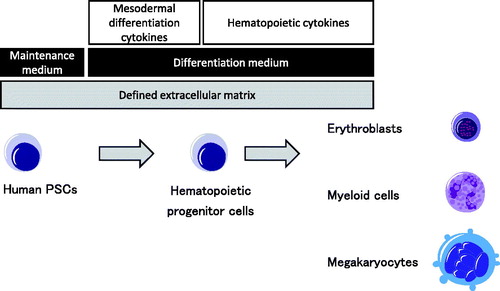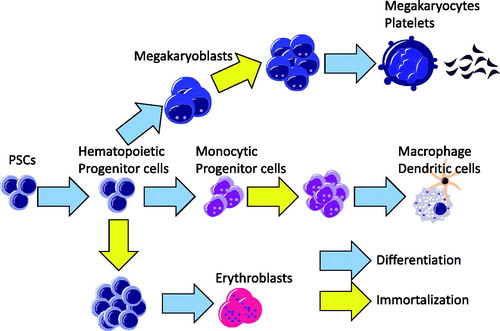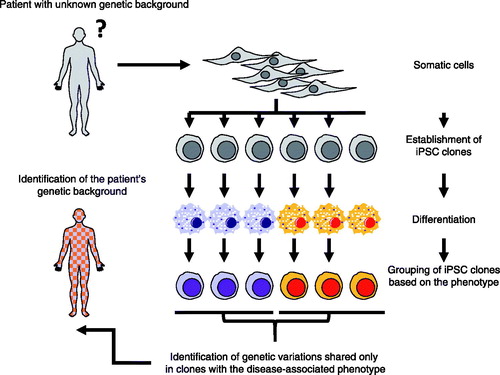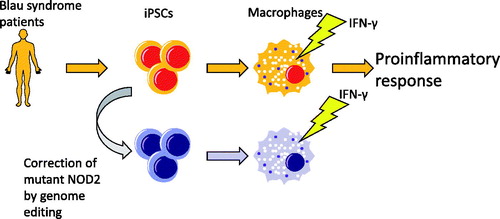Figures & data
Figure 1. A principle for directed differentiation of human PSCs to hematopoietic cells. Human PSCs can be differentiated into hematopoietic progenitor cells by a defined monolayer condition. Hematopoietic progenitor cells are then committed to each hematopoietic lineage by optimizing the cytokine setting.

Figure 2. Immortalization of hematopoietic progenitor cells from human PSCs. Hematopoietic progenitor cells can be immortalized by introducing appropriate transcription factors.



